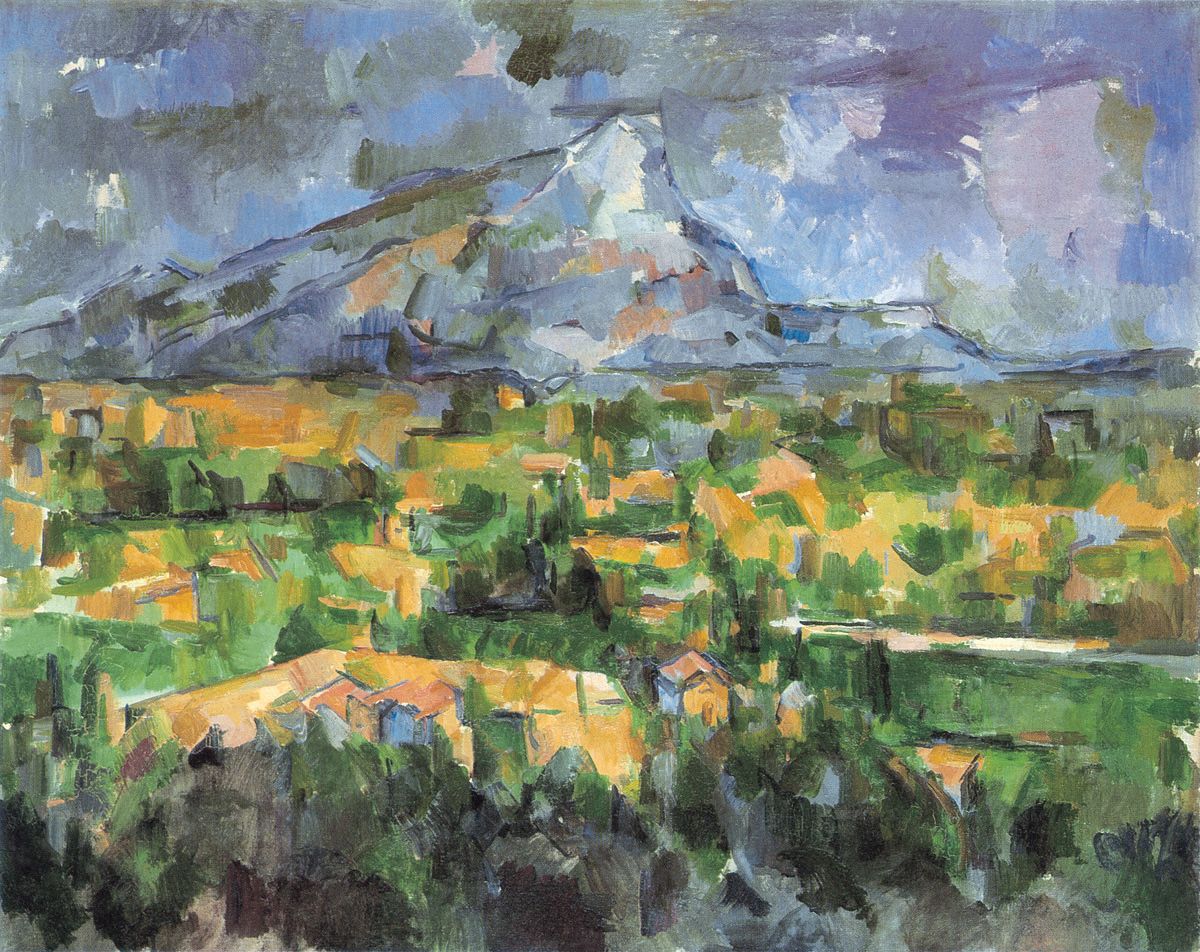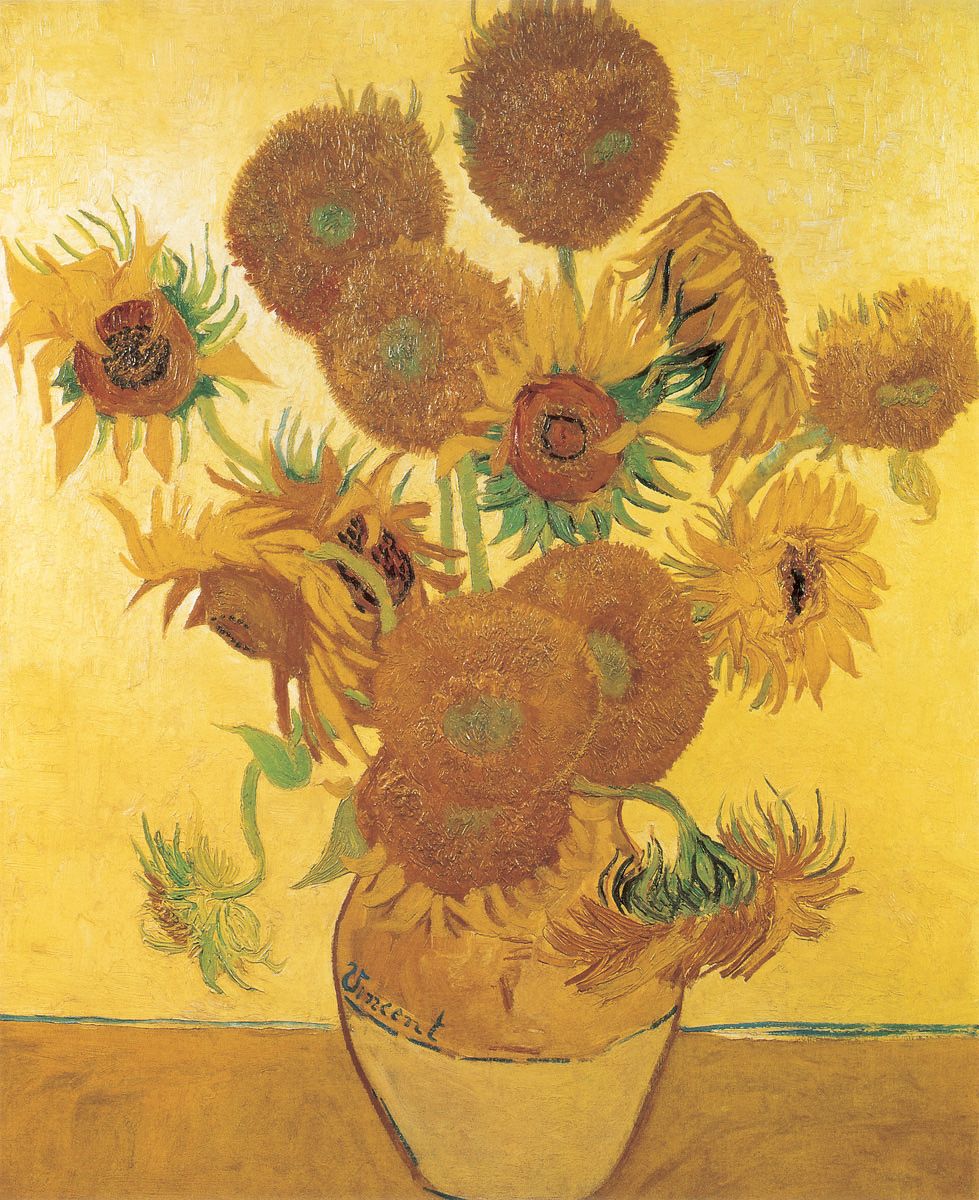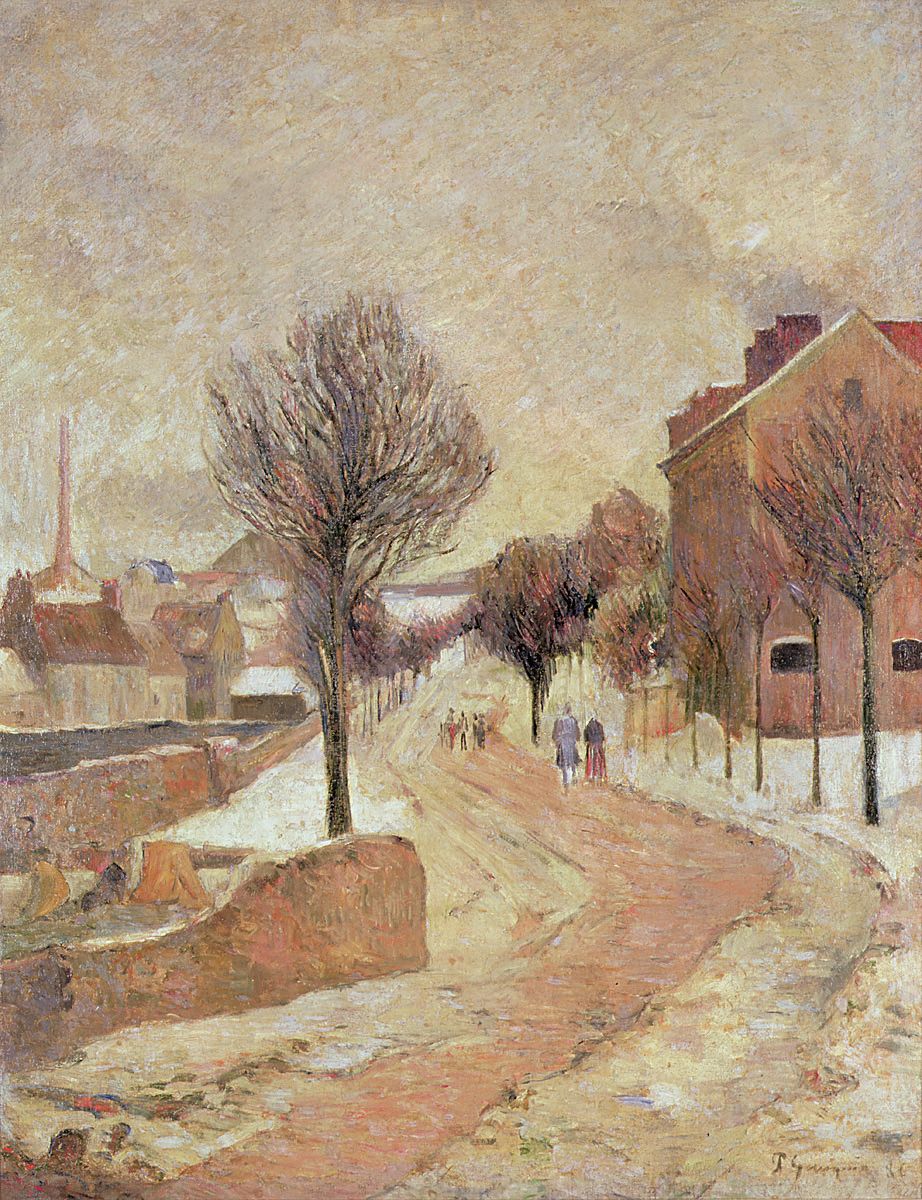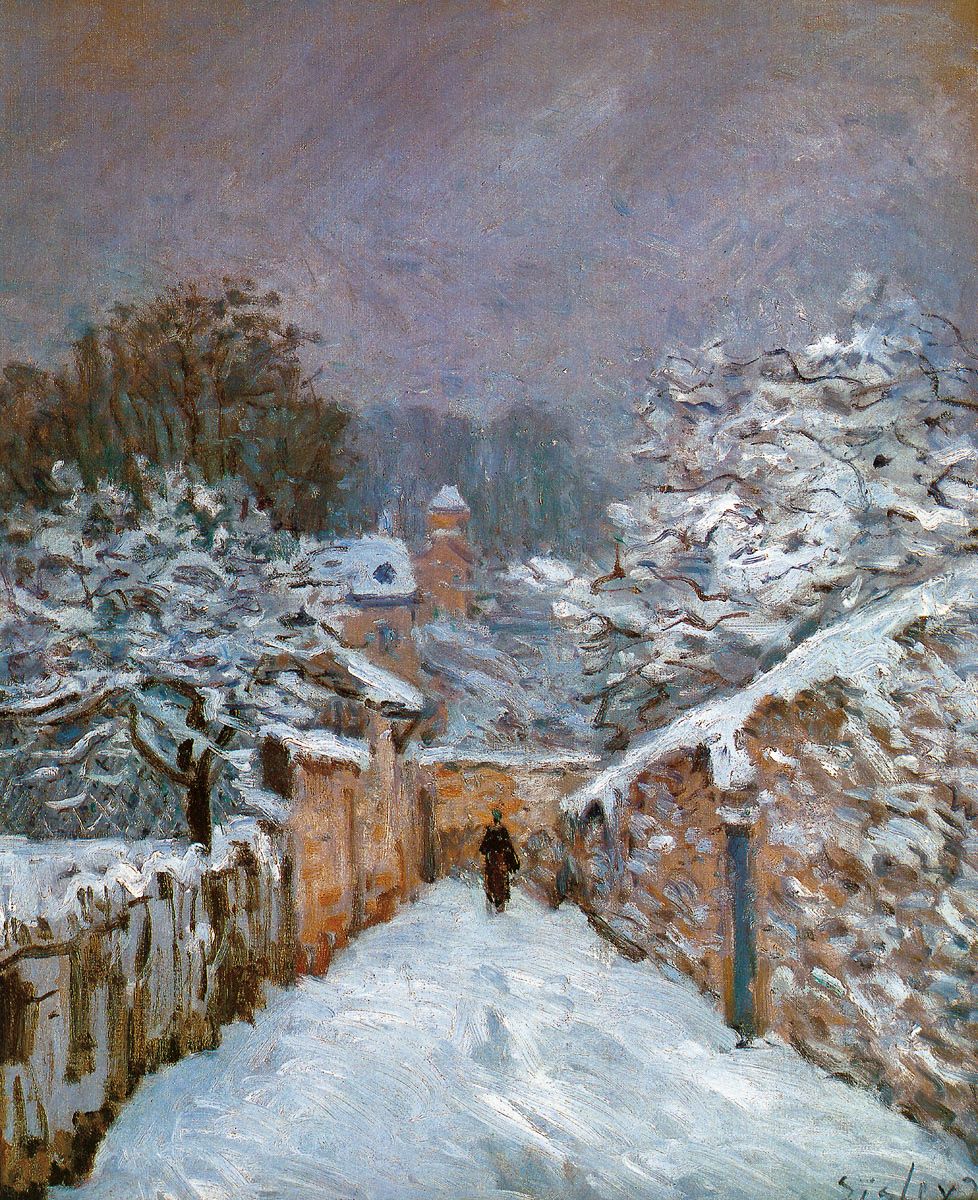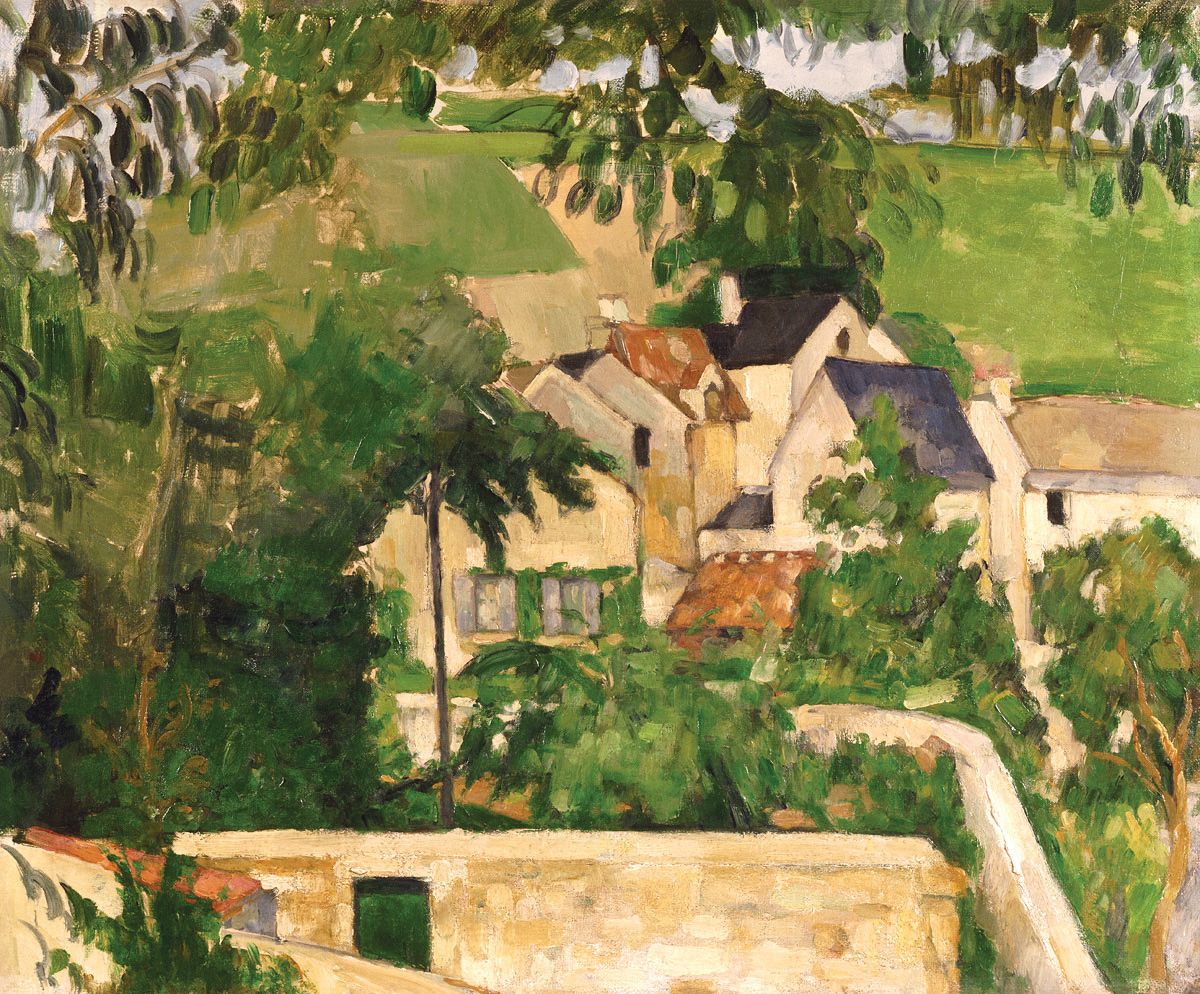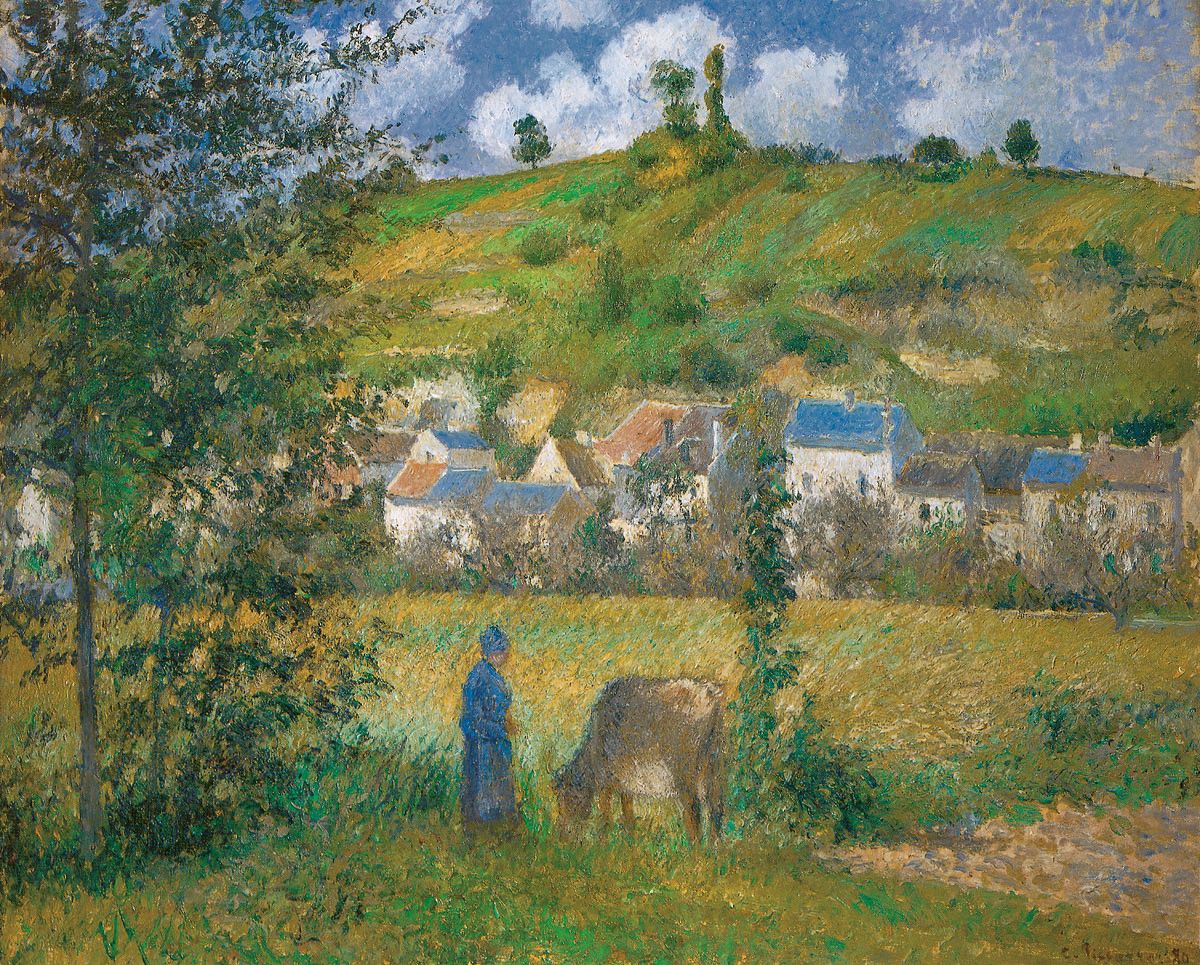Paul Cézanne, Mont Sainte-Victoire, 1902-1904. Oil on canvas, 73 x 91.9 cm. Philadelphia Museum of Art, Philadelphia.
Foreword
What is Post-Impressionism?
The term ‘Post-Impressionism’ has only one meaning: ‘after Impressionism’. Post-Impressionism is not an art movement, nor an art style; it is a brief period at the end of the nineteenth century. Impressionism being a phenomenon unique to French painting, the idea of Post-Impressionism is also closely linked to French art. Generally, the beginning of the Post-Impressionist era dates from 1886, from the moment of the eighth and final joint Impressionist Art exhibition. The era ends after 1900, running only into the first decade of the twentieth century. Although ‘Post-Impressionism’ and its chronological limits are well-defined, it seems that several Post-Impressionist works exist outside this period. Despite this period’s extreme brevity, it is often described as an ‘era’ of Post-Impressionism. In fact, this twenty-year period saw the emergence of such striking artistic phenomenon, such varying styles of pictorial art and such remarkable creative personalities, that these years at the turn of the century can without a doubt be characterised as an ‘era’.
During that period the Impressionists were still alive and working. After 1886 Claude Monet, Edgar Degas, Auguste Renoir, Camille Pissarro and Alfred Sisley created many new pieces, but the period of their creative unity, their joint quest and performances were things of the past. Like Edouard Manet, who died in 1883, they were becoming famous little by little, although official recognition was slow in coming. It seemed that the moment had come to ponder the very idea of Impressionism, to understand what it had brought to art at the time.
In 1886, a Parisian art critic, Félix Fénéon, published a series of articles called “Impressionists in 1886”. Three years after the death of Edouard Manet, Fénéon had already realised that it was not Manet who represented Impressionism. Edouard Manet had taught the Impressionists a lot, but his own bright and independent painting, had also been influenced at some point, in Fénéon’s opinion: “By Camille Pissarro, Degas, Renoir, and above all by Claude Monet: these were the leaders of the revolution of which he was the herald.”[1]
In 1886 the word “Impressionists” did not appear in the title of their exhibition. That exhibition was organised by Berthe Morisot, her husband Eugène Manet and Edgar Degas. From the very start of the artists’ association, Degas was opposed to the term “Impressionism”, coined by the critic Louis Leroy after the title of a Claude Monet painting. In fact, even from the first exhibition, no real unity existed amongst the artists exhibiting together. In an attempt to strengthen the group, they invited their friends to the first exhibition, friends who did not necessarily share the same orientation. However, the course of action at this and subsequent exhibitions was dictated by a core group: three of Gleyre’s students – Monet, Renoir and Sisley – together with Pissarro and Degas, who were joined by Berthe Morisot and some of her friends. Judging by the list of exhibitors, the final exhibition was no longer Impressionism. Neither Claude Monet nor Renoir participated, preferring instead to take part in Georges Petit’s Fifth International exhibition. In addition, irritated at not having been associated with the organisation of the exhibition, Sisley and Caillebotte, friends of the Impressionists, refused to exhibit. In their stead were new exhibitors who had nothing in common with Impressionism: Odilon Redon, Georges Seurat, Paul Signac, Paul Gauguin with his friend Emile Shuffenecker and others. Fénéon attempted dividing the 1886 exhibitors into groups representing various tendencies. In his opinion Degas stood alone; traditional naturalistic Impressionism was represented by Berthe Morisot, Gauguin and Guillaumin; and finally, Pissarro, Seurat and Signac represented a new style. However, even Fénéon, one of the most sensitive Parisian critics of the time, could not separate Impressionism from the other opposing styles that surrounded it and consequentially followed it. This is not surprising. At that time participants at these group exhibitions, artists such as Cézanne and Gauguin, also appeared to belong to Impressionism.
Summary of Impressionism
It was Fénéon, however, who first defined Impressionism’s basic elements, which separated it from traditional painting. “Impressionism has established a new vision in art”, he wrote in 1886, summarising the work of Impressionists. “(…) All historical, allegorical, mythological, or overly literary subjects are forbidden; Work is directly based on nature, and not performed in the studio based on memories, sketches, or written documents; Concern for the emotional significance of colours; An effort to approach brilliant, natural luminosity – the Impressionist school is a school of colourists.” [2]
In literature Emile Zola made the first attempt at understanding Impressionism in his novel L’Œuvre (The Masterpiece) published in Paris in 1886. An enthusiastic supporter of Edouard Manet, Zola wrote the story of a quest and fall of a young ‘Impressionist’ artist. The hero’s biography corresponded to none of the Impressionists of the time. According to Zola, the painting depicted in this novel resembled The Luncheon on the Grass by Edouard Manet. The novel’s main character lived in the well-known bohemian atmosphere of Paris. His art rose in endless doubt and torment; he finally lost his mind and committed suicide. Zola’s contemporaries tried guessing who the painter resembled most: Edouard Manet or Claude Monet? Only Paul Cézanne, Zola’s childhood friend, was convinced that he was the prototype for the character. Feeling betrayed, he broke off his friendship of nearly thirty years with the writer. In the end, the novel offended everyone – Zola was too pessimistic in describing the work of the painter and in depicting his tragic fate. Without doubt it was still too early. For critics, supporters and the painters themselves, it was not yet time to comprehend Impressionism’s impact on the art of that time and the effect it would have on the development of painting.
The term ‘Post-Impressionism’ appeared much later, it acknowledged the major role Impressionism played in Art worldwide. This art movement was so spectacular that none of the then living artists following non-academic paths could avoid its influence. Whether a supporter or an adversary of Impressionism, no artist at the end of the nineteenth century could detach himself from what Monet and his friends had done. Impressionism was a powerful force in the development of pictorial tendencies opposing the diktat of canons from the classical school of painting; it rejected the base adopted during the Renaissance by European art on which were based first Italian then French academic dogma in the seventeenth, eighteenth and nineteenth centuries. Of course, the academic canons regarding professional training in the field of fine art were rigorously logical, rational and, it seems, everlasting. Novelty, however, was not born of negation, but rather of the utilisation of these rules as a basis for long-term development in painting. The freedom Impressionists allowed themselves revealed artistic paths of great diversity, and gave each painter the opportunity to make his own choice.
The Impressionists’ strength lay in their shared outlook toward painting. As a group, they supported not only the opposition to official art, but also intensified the significance of their discoveries. Impressionists never published any manifestos; their statements were made not in words but in paintings. They were consistent and followed their system to the limit of its development. Their fellow-exhibitors and direct followers were justified in judging all the rights and wrongs of the system from their own point of view. Some used the certain elements of their painting; some denied Impressionism, opposing it by their own discoveries.
Claude Monet, Bouquet of Sunflowers, 1881. Oil on canvas, 101 x 81.3 cm. The Metropolitan Museum of Art, New York.
Paul Gauguin, Winter Day, 1886. Oil on canvas, 71.8 x 55.9 cm. Aaron M. and Clara Weitzenhoffer Bequest, Fred Jones Jr. Museum of Art, University of Oklahoma, Oklahoma City.
Paul Cézanne, Quartier Four, Auvers-sur-Oise (Landscape, Auvers), c. 1873. Oil on canvas, 46.3 x 55.2 cm. Philadelphia Museum of Art, Philadelphia.
Post-Impressionism and its Contributions
The era of Post-Impressionism was the time of lone painters; only a very small number of them got together, and then only rarely. The great specialist of Impressionism, John Rewald, used the ingenious phrase of Emile Verhaeren: “There is no longer a unique school, he wrote in 1891, there are a few groups, but even they break up constantly. All these movements remind me of moving geometrical pieces in a kaleidoscope, which separate suddenly only to better come together again. They move apart then get together, but, nevertheless, stay in the same circle – the circle of the new art.” [3]
They didn’t share the same opinion about art, nature or painting style. The only thing the painters had in common was the impression that Impressionism left on them: none of them could have worked in this manner, working as if Impressionism had not existed. All these artists faced the same sad fate – not one of them had a hope of ever entering the Salon and showing his work to the public. Impressionists had shown them a possible way: they created their own exhibitions, excluding from it those who were not with them. They were all very different: some did not have the necessary level of professionalism according to the jury’s rules; some shocked the public by being too bold in their style, too negligent or using colours which were too intense. A new exhibition opened in 1884 in Paris: Le Salon des artistes indépendants. The new Salon was a solution for everyone, because there was no jury and nobody was selecting works for the exhibition. Each painter could show whatever he wanted. The only condition was the number of works being shown, that number changed year after year. Georges Seurat, a Neo-Impressionist, whose unusual position made him undesirable for official exhibitions, took a very active part in organising the Salon des Indépendants. The Independents proclaimed what became the significant achievement of the Post-Impressionism era. According to the ‘Sunday’ painter Henri Rousseau, “Freedom to create must be given to initiators”. [4] Only two years after the last Impressionists exhibition, each painter had the possibility of showing his work to a wide audience.
Although it was often hard to discover a great talent among hundreds of pieces shown there, it was that Salon that gave the opportunity to such uneducated artists as Henri Rousseau to discover the art scene. School education ceased to be an essential quality for painters; Vincent van Gogh and Paul Gauguin were also persistent, self-taught painters. Paul Cézanne – ‘the Impressionist’ –, who was not satisfied with Impressionists’ style, also chose his own special path; Henri de Toulouse-Lautrec, even though he had received classical education, decided to choose a disapproved path. The work of all these painters was conceived in the era of Post-Impressionism and their lives, surprisingly, ended with the end of the century: Van Gogh died in 1890, Seurat – in 1891, Lautrec – in 1901, Gauguin – in 1903, Cézanne – in 1910, the Douanier Rousseau – in 1910.
